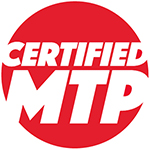Concrete testing is standard in construction to ensure the concrete will stand the test of time. A second reason to perform materials testing on concrete when it arrives at a job site is to see that the concrete delivered is the same as what was specified and purchased. Some common tests are done to help answer both of these questions.
One is to simply weigh it. The unit weight measurement will reveal if it is the same as a known volume of fresh concrete.
Another is to use the slump test. When a conical shape is created of fresh concrete, the test is performed to measure the flow of the concrete to be sure it’s within a certain range so it won’t have issues with proper consolidation.
The air content test is yet another test that will measure the total air content in samples of fresh concrete. This test is limited because it doesn’t show what the in-place air content will be once it has cured.
To test the concrete’s compressive strength, the final step involves filling cylinders and measuring the force needed to break them at specific time intervals, ensuring the concrete passes the strength tests.
Before building, it is crucial to implement various types of concrete testing. These include tests for compressive strength, slump, air content, moisture content, and aggregate properties. These tests ensure that the concrete meets the required standards and specifications for a durable and reliable construction project.
Overview of Concrete Testing
Concrete testing is a critical practice in the construction industry, ensuring that concrete structures are safe, durable, and built to last. This extensive field encompasses various tests and methods to evaluate concrete’s properties and performance at different stages of its life, from fresh to hardened state.
Importance of Concrete Testing
Concrete is a fundamental building material but its properties can vary significantly based on its composition, mixing, handling, and curing processes. Testing provides essential data for:
– Ensuring compliance with design specifications and standards.
– Assessing the quality and consistency of concrete.
– Predicting the performance and durability of concrete structures.
– Identifying potential issues early, reducing costly repairs and structural failures.
Types of Concrete Tests
Fresh Concrete Tests
1. Slump Test: Measures the workability or consistency of concrete. A slump cone is filled with fresh concrete, which is then removed to observe how much the concrete slumps or collapses.
2. Air Content Test: Determines the air content in concrete which affects durability, especially in environments prone to freeze-thaw cycles.
3. Concrete Temperature Testing: Ensures the concrete temperature is within specified limits, crucial for proper curing.
4. Unit Weight Test: Determines the density of the concrete, which can affect its strength and durability.
Hardened Concrete Tests
1. Compressive Strength Test: One of the most crucial tests, typically performed using a hydraulic press to crush concrete cylinders or cubes to failure. This test assesses the concrete’s ability to withstand loads without fracturing.
2. Tensile Strength Test: Concrete is weak in tension. This test is conducted to understand how much tensile stress the concrete can withstand before failing.
3. Flexural Strength Test: Determines the bending strength of concrete. It’s essential in projects where the concrete is expected to withstand bending forces.
4. Penetration Resistance Test: Measures the surface hardness of concrete and is often used to estimate compressive strength.
5. Ultrasonic Pulse Velocity Test: A non-destructive method to assess the quality of concrete by measuring the speed of ultrasonic pulses through it.
Other Important Tests
– Water Permeability Test: Assesses the resistance of concrete against water penetration, which is vital for structures exposed to water or moisture.
– Chloride Permeability Test: Determines the concrete’s resistance to chloride ion penetration, critical in preventing reinforcement corrosion.
– Carbonation Test: Checks for carbonation depth in concrete, which can affect reinforcement corrosion.
– Shrinkage Test: Measures the change in the dimensions of concrete as it dries and loses moisture.
Standards and Guidelines
Concrete testing adheres to various national and international standards like ASTM (American Society for Testing and Materials), BS (British Standards), and IS (Indian Standards). These standards provide guidelines on how to conduct tests and interpret results.
Advanced Testing Techniques
– Microscopic Analysis: Used to examine the microstructure of concrete and understand its composition at a microscopic level.
– Chemical Analysis: Identifies the chemical composition of concrete, which can influence its properties and durability.
– Thermal Analysis: Assesses the thermal properties of concrete, important in fire resistance and thermal stability analysis.
– Load Testing of Structures: Evaluate the load-bearing capacity of existing concrete structures.
Role of Testing in Quality Control
Concrete testing is integral to quality control in construction projects. It helps in:
– Verifying that the concrete mix meets the design requirements.
– Adjusting the mix composition based on test results to achieve desired properties.
– Ensuring that the concrete used in the construction is of high quality.
Challenges in Concrete Testing
– Sampling and Handling: Improper sampling and handling of concrete samples can lead to inaccurate test results.
– Environmental Conditions: Temperature and humidity can significantly affect test outcomes, especially for fresh concrete.
– Technician Proficiency: The accuracy of test results heavily relies on the skill and experience of the technicians performing the tests.
– Equipment Calibration: Regular calibration of testing equipment is necessary to maintain accuracy.
Environmental Considerations
– Sustainability: Testing can also focus on the environmental aspects of concrete, such as using recycled materials in the mix.
– Life Cycle Assessment: Understanding the environmental impact of concrete throughout its life cycle.
Future of Concrete Testing
Advancements in technology are shaping the future of concrete testing. Innovations include:
– Non-Destructive Testing Methods: Techniques that allow testing without damaging the concrete are ideal for evaluating existing structures.
– Automation and Digitalization: Automated testing equipment and digital data recording enhance accuracy and efficiency.
– Smart Sensors: Embedded in concrete to monitor its properties in real-time during curing and throughout its lifecycle.
– AI and Machine Learning: Used for predictive analysis of concrete behavior under various conditions.
Conclusion
Concrete testing is a vast and dynamic field essential to the construction industry. It encompasses a range of tests to evaluate the properties and performance of concrete. With the continual
Shop Certified Materials Testing Products for the materials you need to perform these and other tests for fresh concrete. We are your one-stop shop for all things required for materials testing. Sign up for savings on products through our site today and save!
Related Blogs
How to Calculate Unit Weight Concrete in 2023
Determining the Unit Weight of Concrete for Accurate Measurement

